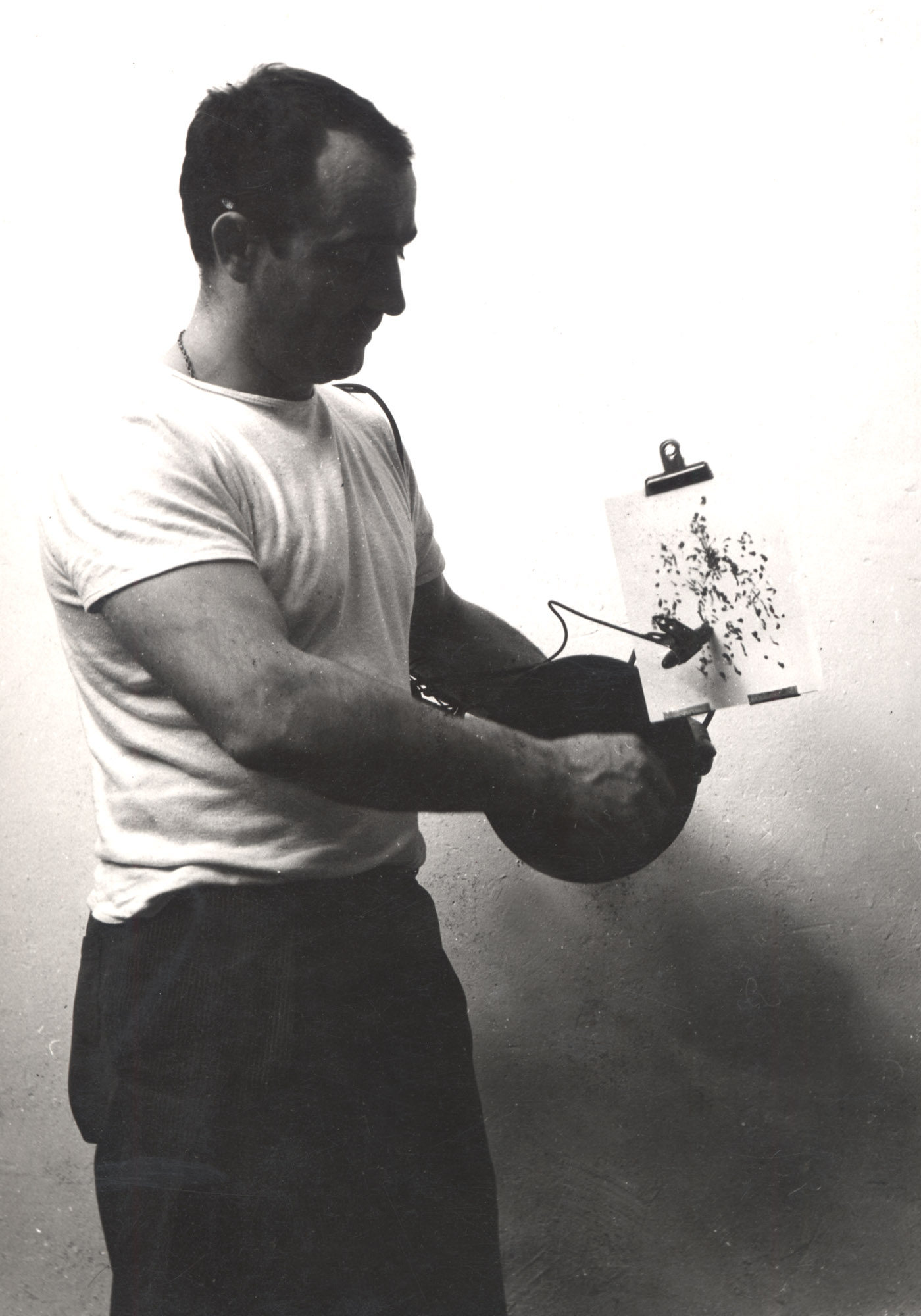Jean Tinguely
CH
Born in 1925 in Freibourg, Switzerland
Died in 1991 in Bern, Switzerland
 Jean Tinguely portant le "Méta-Matic n° 14", Stockholm, 1961, D.R.
Jean Tinguely portant le "Méta-Matic n° 14", Stockholm, 1961, D.R.
There is much more to Tinguely’s work than the mixture of moving sculptures and found objects, of kinetic art and Nouveau Réalisme to which it is often reduced. What today we perceive as fully constituted movements, with their lists of artists, their critics and their exhibitions, were at the time transient and malleable, as likely to disintegrate as to gel, denounced by those who had only just theorised them: Pop and Nouveau Réalisme, happenings and Junk Art, Lettrism and concrete poetry, concrete music and electronic music, dance and performance, the museum and public space, Fluxus and Dada – all these phenomena were still in gestation. Not only was Tinguely at the heart of all this, he was also a precursor, and as such, his heritage continues to resonate in many different ways today: his art was political, “gendered,” open to sound and electronics, postmodern before postmodernism, and it championed recuperation at a time when the obsolescence of machines was becoming a concern.
Camille Morineau, « Jean Tinguely’s useless loud machines, yesterday and today », Translation Charles Penwarden, Exhibition catalogue Jean Tinguely ‘60s, 2016.